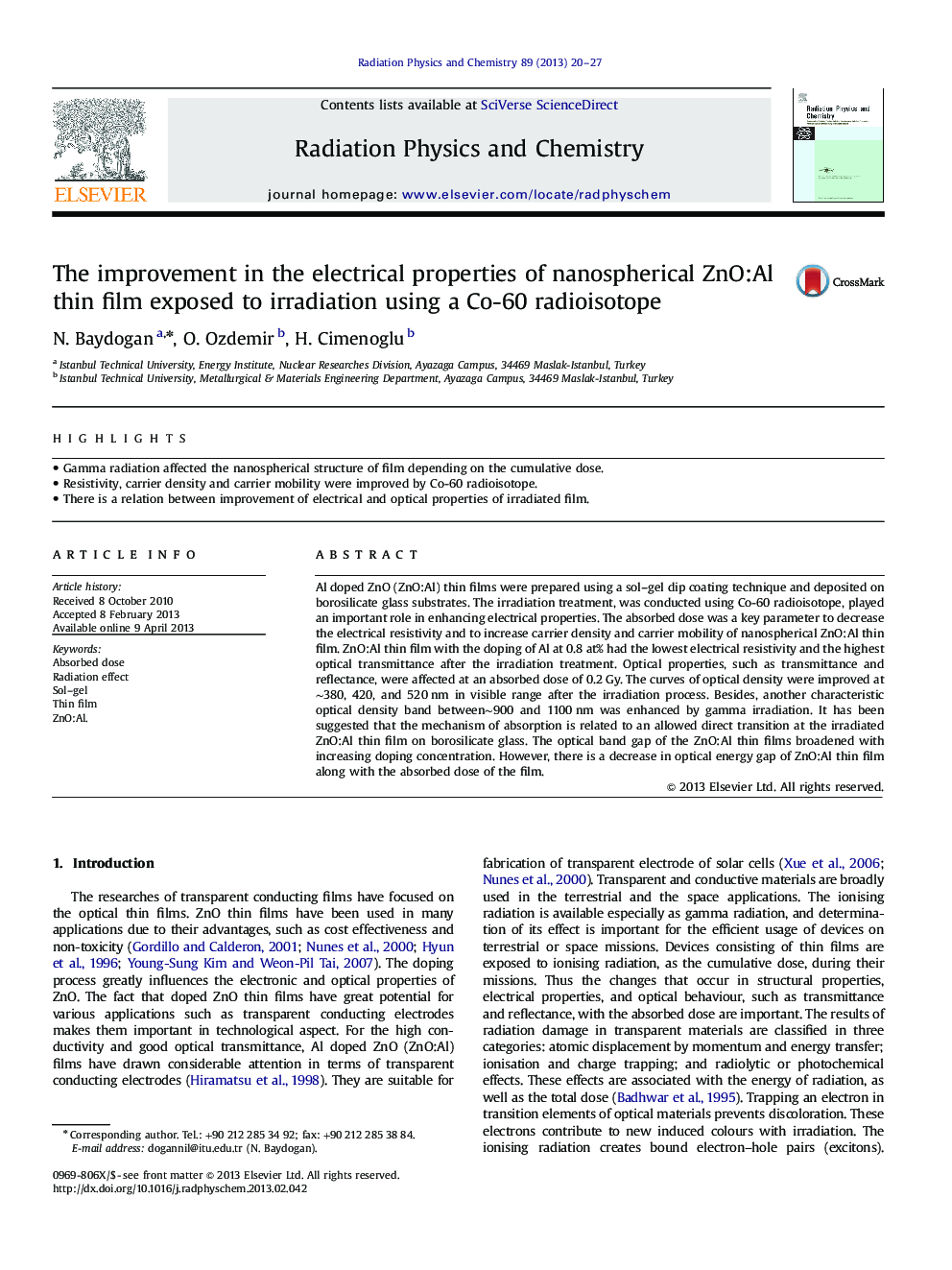| Article ID | Journal | Published Year | Pages | File Type |
|---|---|---|---|---|
| 1891485 | Radiation Physics and Chemistry | 2013 | 8 Pages |
•Gamma radiation affected the nanospherical structure of film depending on the cumulative dose.•Resistivity, carrier density and carrier mobility were improved by Co-60 radioisotope.•There is a relation between improvement of electrical and optical properties of irradiated film.
Al doped ZnO (ZnO:Al) thin films were prepared using a sol–gel dip coating technique and deposited on borosilicate glass substrates. The irradiation treatment, was conducted using Co-60 radioisotope, played an important role in enhancing electrical properties. The absorbed dose was a key parameter to decrease the electrical resistivity and to increase carrier density and carrier mobility of nanospherical ZnO:Al thin film. ZnO:Al thin film with the doping of Al at 0.8 at% had the lowest electrical resistivity and the highest optical transmittance after the irradiation treatment. Optical properties, such as transmittance and reflectance, were affected at an absorbed dose of 0.2 Gy. The curves of optical density were improved at ∼380, 420, and 520 nm in visible range after the irradiation process. Besides, another characteristic optical density band between∼900 and 1100 nm was enhanced by gamma irradiation. It has been suggested that the mechanism of absorption is related to an allowed direct transition at the irradiated ZnO:Al thin film on borosilicate glass. The optical band gap of the ZnO:Al thin films broadened with increasing doping concentration. However, there is a decrease in optical energy gap of ZnO:Al thin film along with the absorbed dose of the film.
